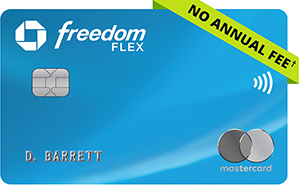Credit Card Annual Fees are such a complicated subject. From working with people over the years on finding the “Best” Credit Card, Annual Fees are often a deal-breaker. I get it! That was me once upon a time. The key to Annual Fees is the Return on Investment (ROI). After letting my guard down and making that connection; I’ve racked up quite a few Annual Fees into my Credit Card Portfolio. In this article, I’m going to take you through what to do when the Credit Card Annual Fee Hits and what your options are!
Join Our Basic Travel Facebook Group to Stay in the Loop on the Latest Travel & Finance News!
In this Basic Guide, you’ll find:
- What are Annual Fees
- Examples of What Annual Fees Often Include
- How to tell if the Annual Fee is worth it
- What to do when an Annual Fee Hits
- How to Track Annual Fees
- Steps to take when the Annual Fee doesn’t work for you
What are Annual Fees?
A Credit Card Annual Fee is the “cost” of keeping a particular card opened. These fees can range from Zero or no Fee up to $2,500 + per year with some of the more premium Card Options. In my Basic World, the most expensive Annual Fee I am currently paying is $550 and it is certainly worth it for me. More on that breakdown below!
Typically Annual Fees are there to cover the cost of a variety of benefits that come with a particular Credit Card. Most people that I talk to about Annual Fees don’t even know these benefits exist or if they do; don’t understand how to maximize the value.
Examples of What is often included into an Annual Fee:
Statement Credits – Typically these credits come in the form of Travel, Airline, Hotel, Food, Uber, etc. Cardholders receive a set amount of their Annual Fee back in a Credit. The credit is applied to the charges throughout the year when purchases in the Category take place. For example, general Travel Credit and Booking a Hotel Stay.
Lounge Access – This is a popular perk that can be found in Airports and Hotels! Often lounges include Free Food and Beverages which helps to offset the Annual Fee.
TSA Pre/Global Entry Credit – Many Credit Cards Include a Credit Waiver that can be used towards a membership to either TSA Pre or Global Entry. I personally love this benefit! Using the expedited lines at the airports has saved me a ton of time over the years
Foreign Transaction Fees Waived – This is a nice perk that people often undervalue until they get hit with those fees while traveling!
Trip Insurance – Many Premium Cards include Trip Cancellation and Trip Interruption Insurance. This particular benefit has saved me some serious money over the years. Flights are often delayed when departing out of my hometown of Buffalo NY thanks to the snow. If I miss a connection or lose a night at a hotel, this benefit will reimburse me.
Car Rental Insurance – This perk has saved me some serious money over the years, especially when traveling internationally. Many Travel Credit Cards offer Rental Car Collision Coverage that is either Primary or Secondary to personal auto insurance.
Luggage Insurance – I personally have never had to use this perk before as I am on #teamcarryon but I’ve known people who have saved a ton of money with this perk. Typically, this covers the cost of lost or damaged luggage, including the belongings.
Travel Insurance – This can be a huge cost! Think of getting hurt while traveling abroad and needing medical services or emergency evacuation. Some of the Premium Travel Credit Cards offer this benefit!
Purchase Protection – This Coverage can protect new purchases from theft or damage.
Return Protection – This Coverage can reimburse the cost of items that a store won’t pay within a certain amount of time after purchasing.
Extended Warranty – Many Credit Cards will extend the U.S. Manufacturers Warranty for items purchased with the Card.
Increased Value for Points used for Travel – Many Premium Travel Credit Cards will offer a bonus amount of Points Back when used through a Travel Portal. For example, the Chase Sapphire Reserve® offers an Additional 50% Points Back when using the Chase Travel Portal.
Transfer Partners & Shopping Portals – Some Credit Cards offer options to Transfer Points directly to Airline and Hotel partners at a fixed ratio. This often results in added value for those points. In addition, there are typically options to use points & miles to purchase Giftcards and items from non-travel related stores.
Increased Earning – Depending on the purchase, many Credit Cards will offer bonus points or cash back per dollar spent. For example, some Cards may offer 3X the points on Travel and Dining while others will offer 3X on Office Supply Stores. This can result in added value if there is a large amount of spending taking place in a specific bonus category. Some hotel cards offer 7-10 times the amount of points when using a co-branded credit card to book a room!
How to Tell if the Annual Fee is Worth It
Determining if an Annual Fee is worth the investment involves taking a hard look at a few things. Some of the questions to ask yourself when considering to pay an annual fee:
- Am I going to be able to utilize the benefits of this card?
- Am I getting good value from this card?
- Cost of Annual Fee Versus Value of Perks & Benefits
- Are there other options that can provide similar value but less cost?
- Is the Credit Lender or Bank offering a Retention Offer for me to Pay the Annual Fee and keep the card open?
These are the sorts of questions I ask myself when evaluating whether or not to pay an Annual Fee. I find it helpful to go through each question above when making this determination. Some Credit Cards are easier to make decisions on than others but ultimately it comes down to whether the card makes sense for your individual situation.
What to do When the Annual Fee Hits (or shortly before)
This is the perfect time to look into retention offers. Typically one of my first steps in determining whether or not a Credit Card will remain open is researching retention offers. A Retention Offer is basically a special offer that Banks and Credit Lenders will provide as an incentive to keep an account open. Sometimes these offers include waiving the annual fee, providing credit towards the annual fee, or a new minimum spend that will result in bonus points & miles. Not all Banks and Lenders will offer a retention offer but it’s certainly worth calling the number on the back of the Credit Card to check.
You can learn more about Getting Retention Offers by Clicking Here (Coming 4-14-20)
Tracking Annual Fees
I believe the best strategy for tracking Annual Fees is a Simple Google Spreadsheet. My spreadsheet is organized by Credit Card, Bank/Lender, Date Opened, Annual Fee, Spending Requirement for Signup Bonus, and the Date I last Used the Credit Card. A few times each month, I review this spreadsheet to see which Annual Fees are coming up. This allows me to plan accordingly and reach out for Retention Offers. You’ll find my Basic Template Here that you Can Copy!
Steps to Take When the Annual Fee Doesn’t Make Sense for Me
You have gone through the steps above to see if paying the Annual Fee makes sense. A combination of no/low retention offers and not receiving benefits from the card have led to this decision. There is one last factor to consider before closing the card. Is it possible to downgrade to a lower or no annual fee credit card? By downgrading, you’ll be doing two things. First, the account and credit line will remain open on your credit report which will ultimately help your Credit Score. Second, this leaves the option open down the road to upgrade back. Sometimes there are no options for downgrading and that is when it makes sense to close the credit card.
Basic Breakdown
I hope that this Basic Guide to Credit Card Annual Fees is helpful and provides inspiration to consider cards that have high annual fees. There have been times, especially within the first year of opening a new Card that I can double or even triple my annual fee investment.
What do you think aboutAnnual Fees?




